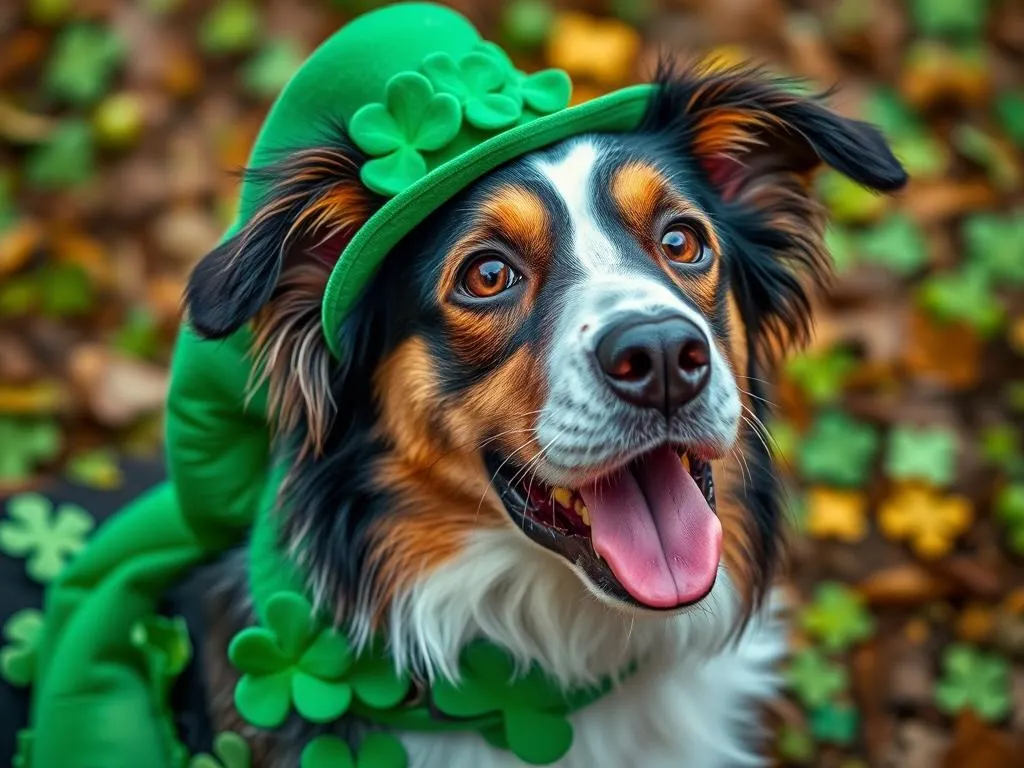
St. Patrick’s Day is a joyous occasion celebrated with parades, parties, and plenty of festive food. While the holiday is a time for fun and festivities, it can also pose certain risks to our furry friends. It’s essential to ensure that our dogs remain safe and healthy during these celebrations. This article provides valuable St. Patrick’s Day safety tips for dogs, helping you navigate the holiday with your pet in mind.
Understanding the Risks of St. Patrick’s Day
Common Hazards for Dogs
As you prepare for St. Patrick’s Day, it’s vital to be aware of the potential hazards that can threaten your dog’s health. Many common foods enjoyed during the holiday can be toxic to dogs. Here are a few to watch out for:
- Chocolate: Often found in various festive treats, chocolate is toxic to dogs and can lead to serious health issues.
- Alcohol: Even small amounts of alcohol can be dangerous for dogs, potentially causing vomiting, diarrhea, and even more severe health complications.
- Certain Vegetables: Some ingredients commonly used in St. Patrick’s Day meals, such as onions and garlic, can be harmful to dogs.
In addition to food hazards, decorations can also pose risks. Tinsel, small items, and even certain plants can be ingested, leading to choking or gastrointestinal blockages.
Social Gatherings and Dog Behavior
St. Patrick’s Day often involves social gatherings, which can be overwhelming for dogs. New people, loud noises, and unfamiliar environments can result in anxiety or aggression. It’s crucial to monitor your dog’s interactions with guests and other pets, ensuring that they feel comfortable and secure. If you notice signs of stress, such as barking, whining, or hiding, consider providing a quiet space where your dog can retreat.
Environmental Hazards
Outdoor festivities can also introduce risks for dogs. Fireworks, which are common during celebrations, can frighten pets and lead to panic. Crowded areas can pose dangers as well, with the risk of dogs escaping or getting lost. Changes in routine and environment can further stress your dog, making it essential to keep a close eye on their behavior during these times.
Safe Foods and Treats for Your Dog
Dog-Friendly St. Patrick’s Day Treats
Celebrating St. Patrick’s Day doesn’t mean you have to exclude your dog from the festivities. There are plenty of safe, homemade treats you can prepare for your furry friend. Here are some ideas for St. Patrick’s Day safety tips for dogs regarding treats:
- Spinach-Infused Biscuits: Spinach is a healthy green vegetable that dogs can enjoy. Combine it with whole wheat flour, eggs, and peanut butter to make delicious, themed biscuits.
- Green Apple Slices: Fresh apple slices (with the seeds removed) can be a refreshing and healthy snack for your dog.
- Carrot Sticks: These crunchy snacks are not only safe but also help keep your dog’s teeth clean.
You can also consider themed toys or non-food gifts, such as green squeaky toys or cozy blankets, to include your pet in the celebration.
Foods to Avoid
It’s equally important to know what foods to steer clear of during the holiday. Here’s a detailed list of common St. Patrick’s Day foods that are toxic to dogs:
- Corned Beef: High in salt and spices, which can upset your dog’s stomach.
- Potatoes: While cooked potatoes are safe, raw potatoes can be harmful.
- Dairy Products: Many dogs are lactose intolerant, and dairy can cause digestive upset.
Before guests arrive, communicate clearly about what foods are off-limits for your dog. This proactive approach can prevent accidental sharing of harmful treats.
Keeping Your Dog Calm and Comfortable
Creating a Safe Space
Having a designated quiet area for your dog during celebrations is essential. This safe space should be equipped with familiar items, such as their bed, toys, and some water. By providing a calm environment, your dog can retreat when feeling overwhelmed.
Managing Anxiety and Stress
During St. Patrick’s Day celebrations, it’s crucial to recognize the signs of stress in dogs. Look for behaviors such as:
- Excessive barking or whining
- Panting or drooling
- Hiding or seeking isolation
To help manage anxiety, consider employing calming techniques. Soft music or white noise can create a soothing atmosphere, while aromatherapy with dog-safe essential oils may also help. Additionally, engaging in gentle play or providing a favorite chew toy can distract and comfort your pet.
Outdoor Safety Tips
Supervised Outdoor Activities
If you plan to take your dog outdoors during St. Patrick’s Day festivities, supervision is key. Keep a close eye on your dog during outdoor activities and events, especially if other dogs are present. Here are some safety tips for leash handling and socializing:
- Use a sturdy leash to prevent your dog from wandering off.
- Introduce your dog to other pets gradually to ensure a positive interaction.
- Avoid areas with large crowds or loud noises where your dog might feel anxious.
Hydration and Sun Protection
With outdoor celebrations, it’s essential to ensure that your dog stays hydrated. Provide fresh water at all times, especially if the weather is warm. Dogs can overheat quickly, so keep an eye out for signs such as excessive panting, drooling, or lethargy.
If your celebration takes place in direct sunlight, consider sun protection for your dog. Certain breeds are more susceptible to sunburn, particularly those with short or light-colored fur. Using dog-friendly sunscreen on exposed areas can help keep their skin safe.
Health Considerations Post-Celebration
Monitoring for Illness
After the festivities, it’s crucial to monitor your dog for any signs of illness. Keep an eye out for symptoms such as:
- Vomiting
- Diarrhea
- Lethargy
- Changes in appetite
If you notice any of these signs, it may indicate that your dog ingested something harmful or that the excitement of the day was too much for them.
When to Seek Veterinary Care
If your dog exhibits any concerning symptoms, it’s important to know when to seek veterinary care. Here are some guidelines:
- If your dog shows signs of distress or pain that doesn’t improve.
- If vomiting or diarrhea persists for more than a few hours.
- If your dog appears lethargic or unresponsive.
Having your veterinarian’s contact information readily available can make it easier to act quickly if needed.
Conclusion
As St. Patrick’s Day approaches, it’s essential to keep our dogs’ safety at the forefront of our celebrations. By following these St. Patrick’s Day safety tips for dogs, you can ensure that your furry friends remain safe and healthy while enjoying the festivities. Remember to celebrate responsibly, taking the necessary precautions to keep your pets happy and secure during the holiday.
Sharing your experiences and tips with friends and fellow pet owners can foster a greater awareness of dog safety during celebrations. Together, we can create a safe and enjoyable environment for all pets during St. Patrick’s Day and beyond.









